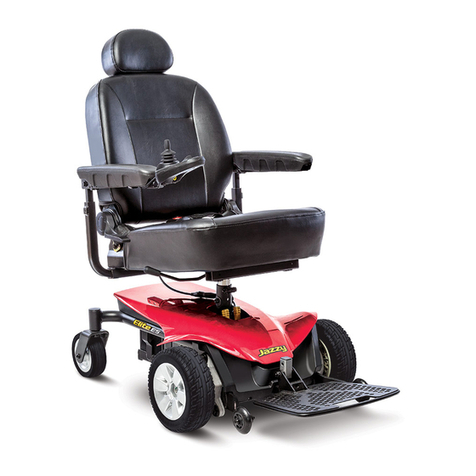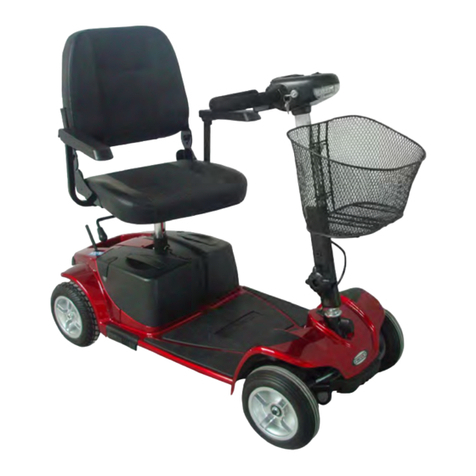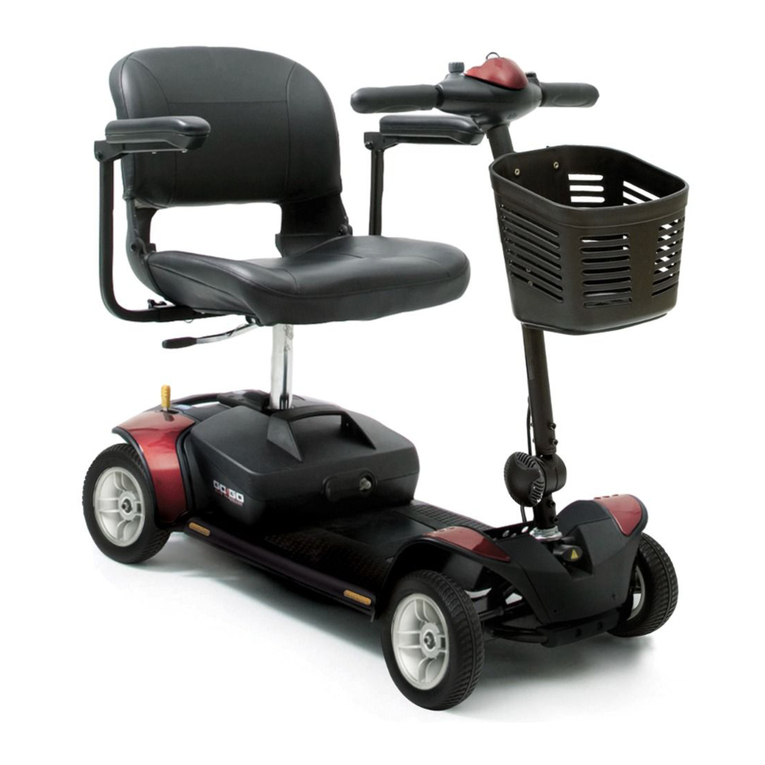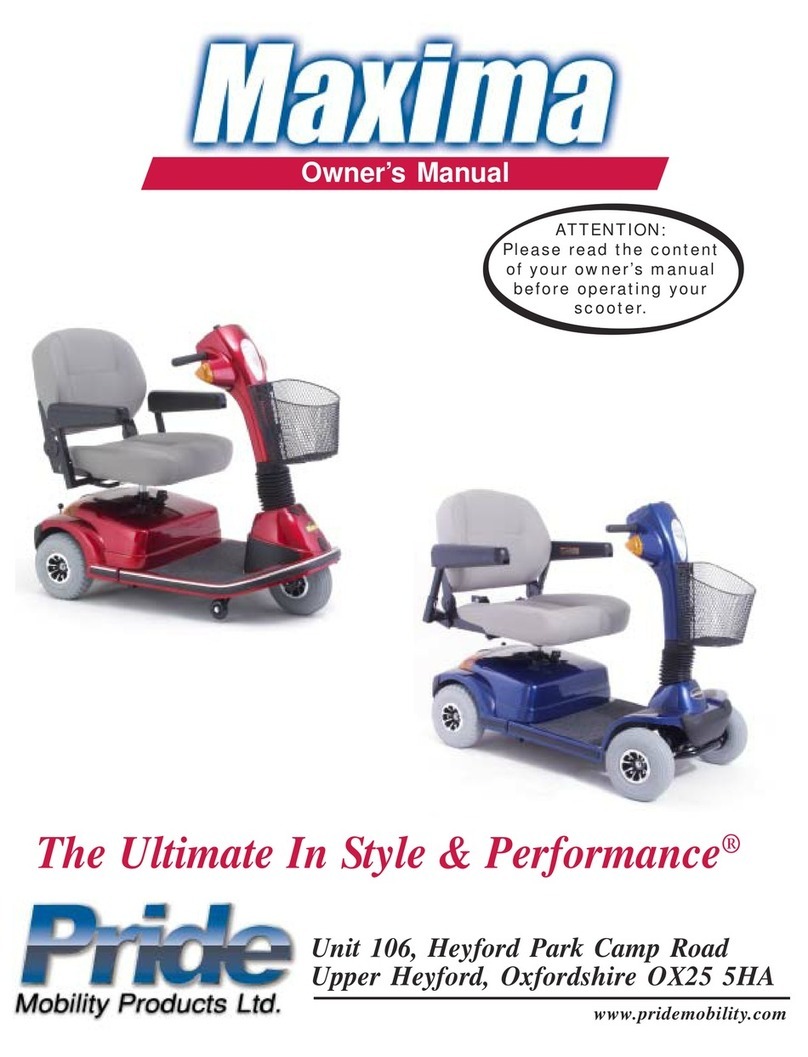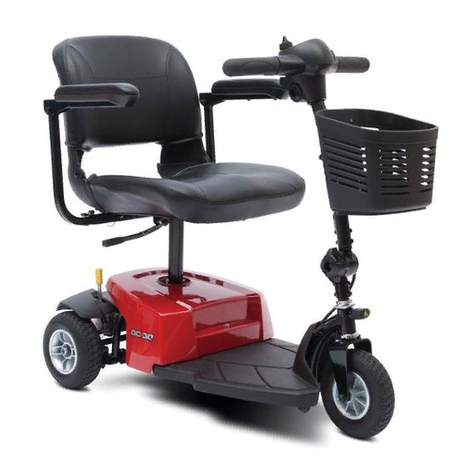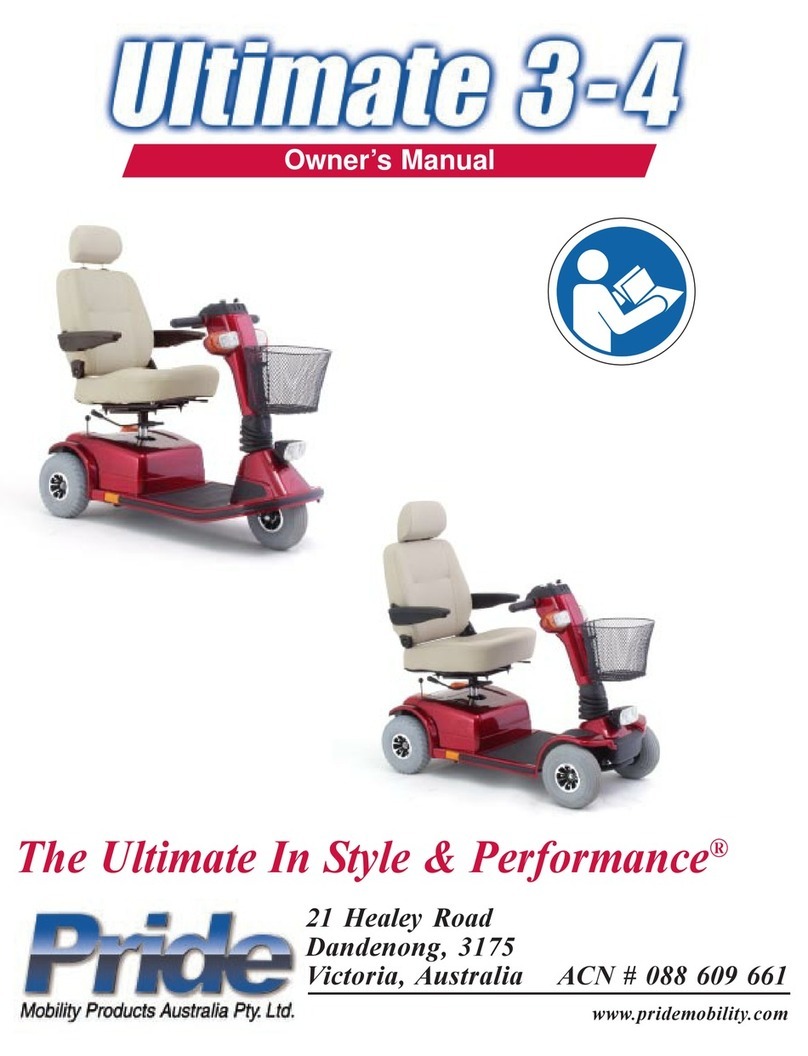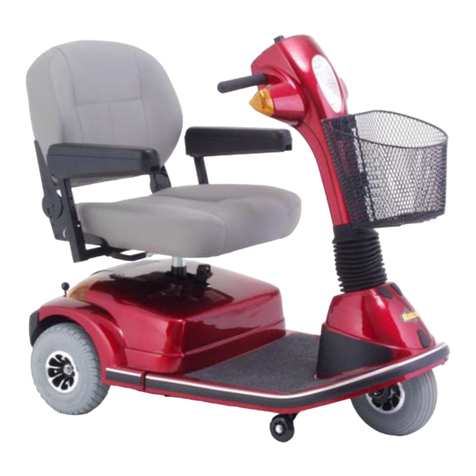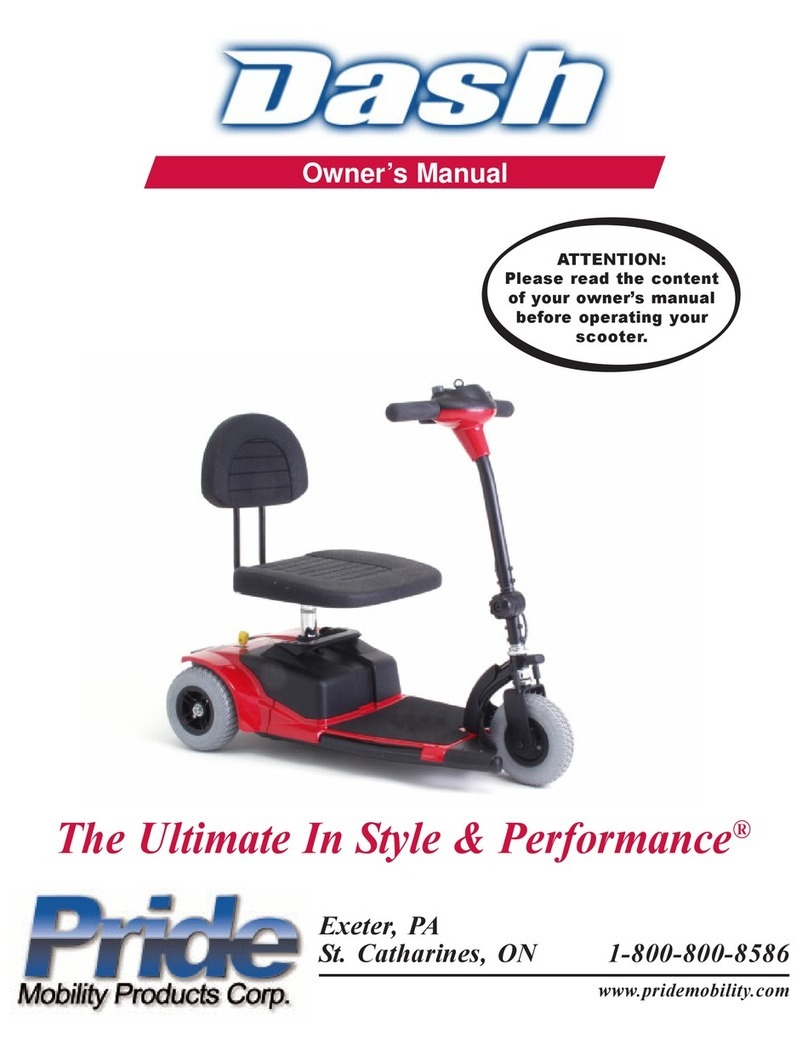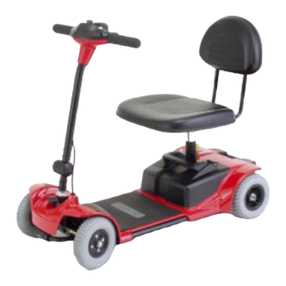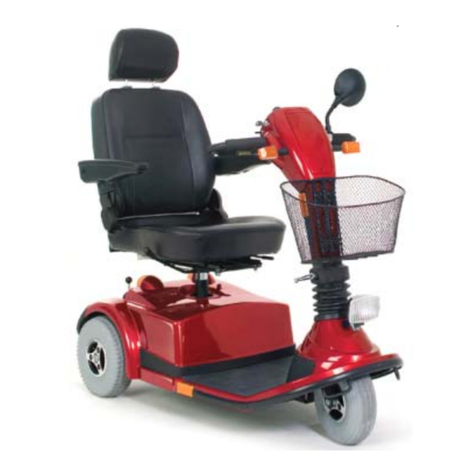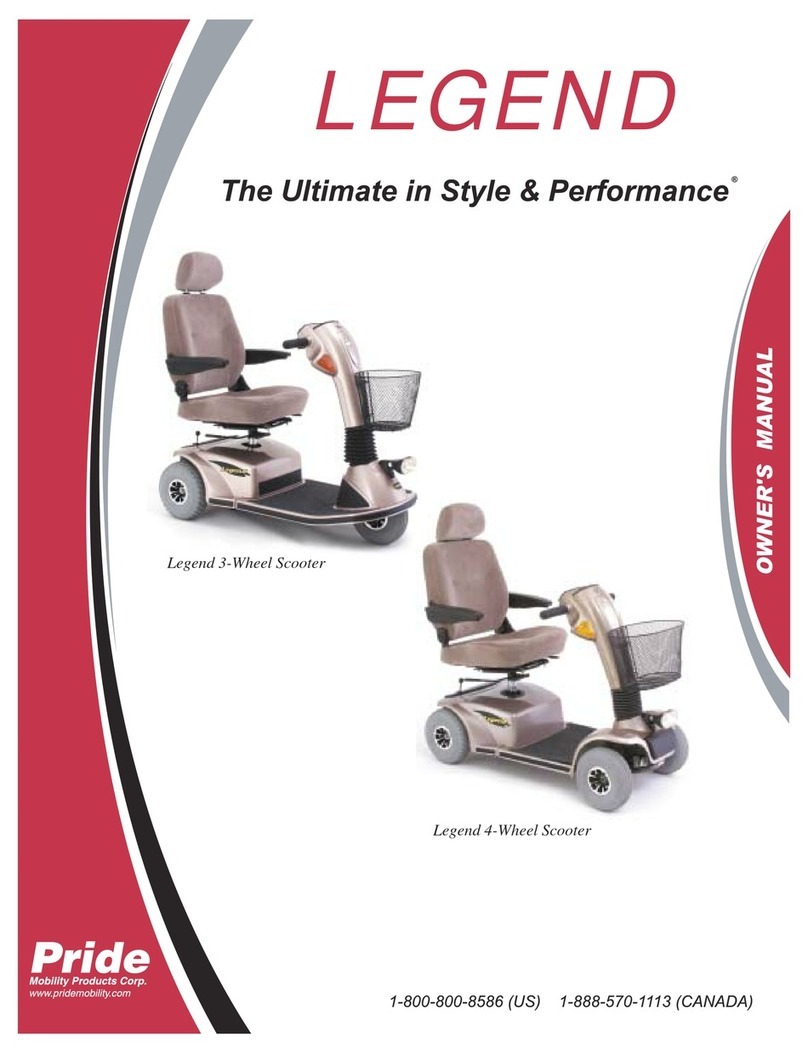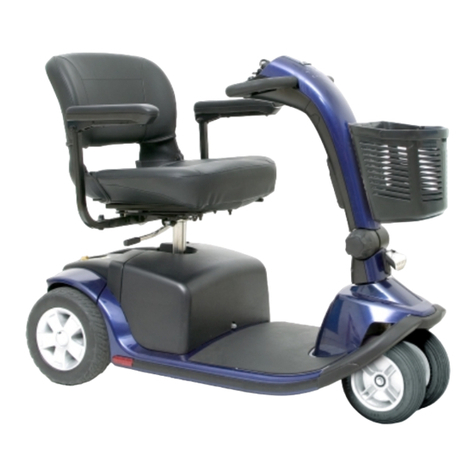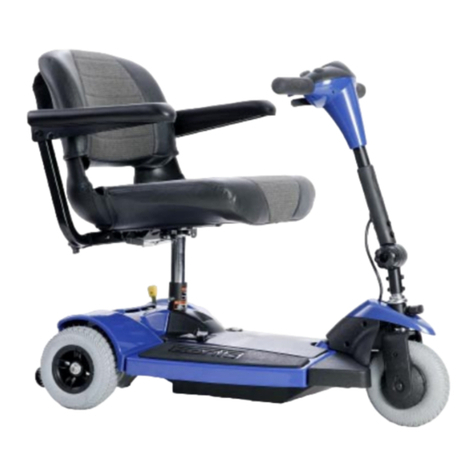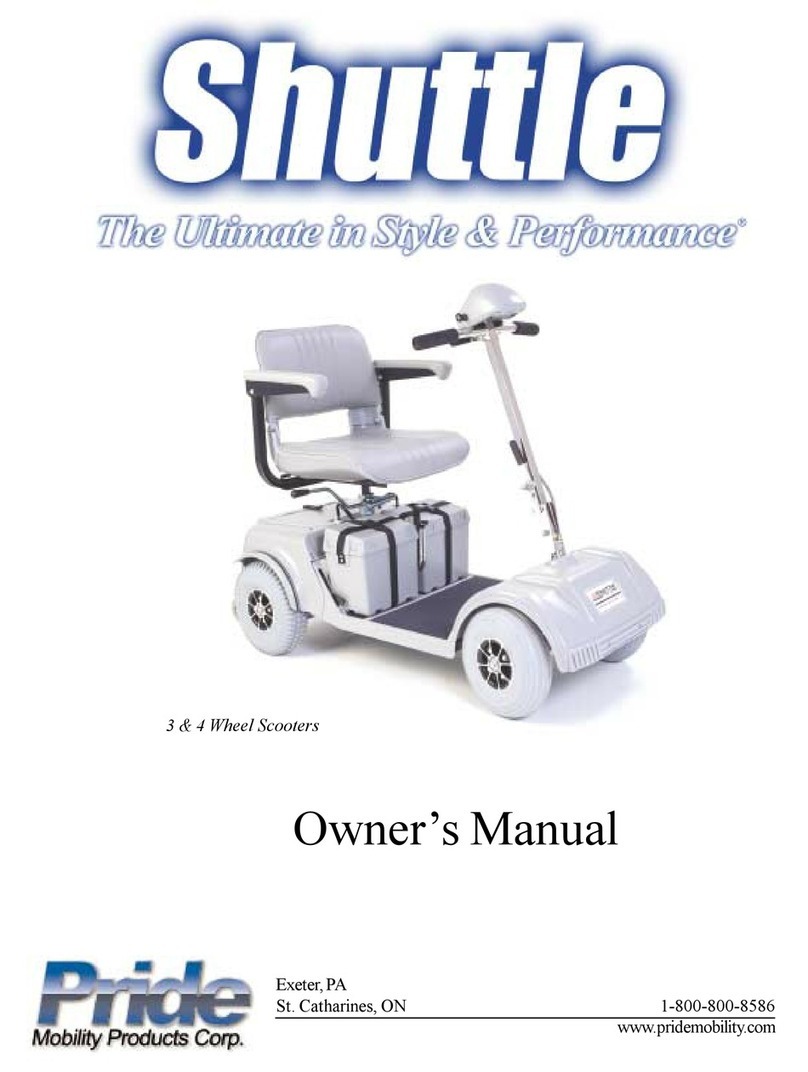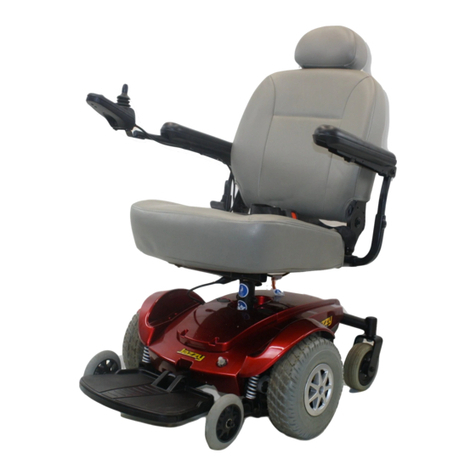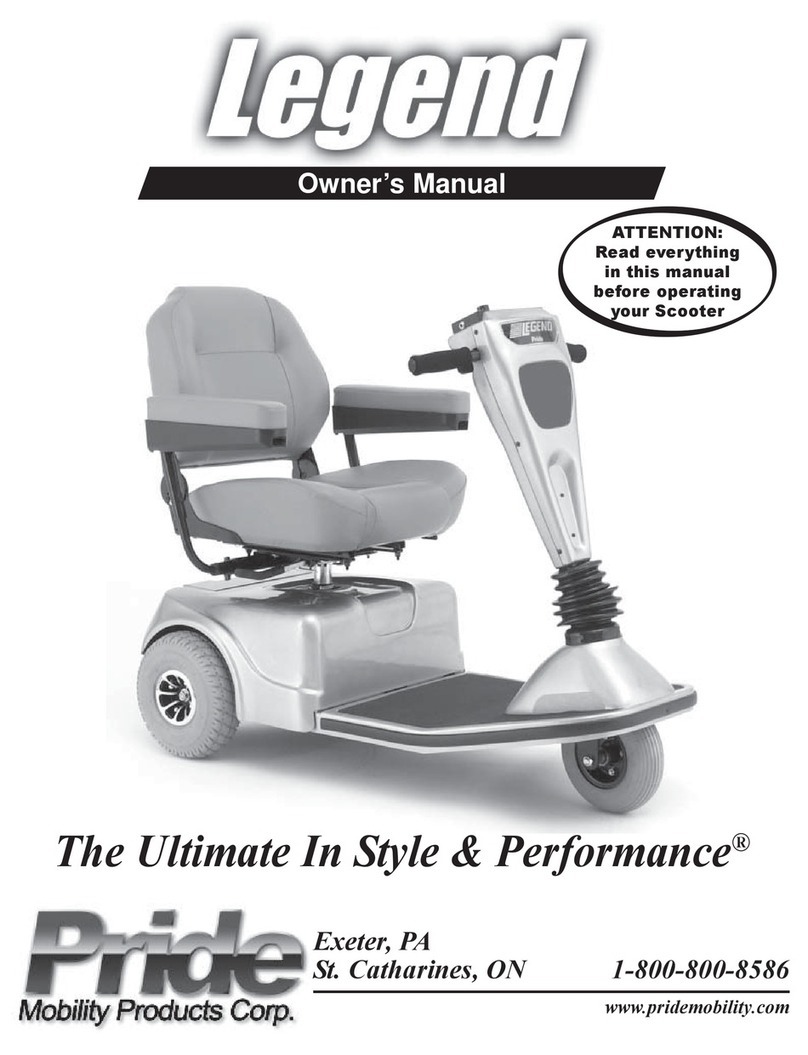
9
Revo www.pridemobility.com
II. SAFETY
When climbing an incline, try to keep your scooter moving. If you must stop, start up again slowly, and then
acceleratecautiously.When drivingdown an incline, do so by setting the speed adjustment dial to theslowest
settingand driving in the forward direction only. Ifyour scooter startsto move downthe incline fasterthan you
anticipatedor desired, allow it tocome toa complete stop by releasing the throttlecontrol lever.Then push the
throttlecontrol lever forward slightlytoensureasafelycontrolleddescent.
WARNING! Any attempt to climb or descend a slope steeper than what is shown in figures 1, 1A,
and 1B may put your scooter in an unstable position and cause it to tip, resulting in personal
injury.
WARNING! When climbing an incline, do not zigzag or drive at an angle up the face of the
incline. Drive your scooter straight up the incline. This greatly reduces the possibility of a
tip or a fall. Always exercise extreme caution when negotiating an incline.
WARNING! Do not drive your scooter across the side of an incline or diagonally up or down
an incline; do not stop, if possible, while driving up or down an incline.
WARNING! You should not travel up or down a potentially hazardous incline (i.e., areas
covered with snow, ice, cut grass, or wet leaves).
WARNING! When on any sort of an incline or decline, never place the scooter in freewheel
mode while seated on it or standing next to it.
WARNING! Even though your scooter is capable of climbing slopes greater than those
illustrated in figures 1, 1A, and 1B do not, under any circumstances, exceed the incline
guidelines or any other specifications presented in this manual. Doing so could cause
instability in your scooter, resulting in personal injury and/or damage to your scooter.
WARNING! Never carry an oxygen tank weighing more than 13 lbs. Never fill the rear
basket with contents exceeding 13 lbs.
Handicap public access ramps are not subject to government regulation in all countries, and therefore do not
necessarilyshare thesamestandardpercentofslope. Otherinclinesmaybenaturalor,ifman-made, not designed
specificallyforscooters.Figures1,1Aand1Billustrateyourscooter’sstabilityanditsabilitytoclimbgradesunder
variousweightloadsandundercontrolledtestingconditions.
Thesetestswereconductedwith the scooter’s seatinthehighest position and adjustedrearwardonthe seat base
toitsfarthestrearwardposition.Usethis information as a guideline.Yourscooter’sabilitytotravelupinclines is
affectedby yourweight, your scooter’sspeed, your angleof approach to theincline, and yourscooter setup.
Figure 1. 3-wheel Maximum Recommended Incline Angles Figure 1A.4-wheel Maximum Recommended Incline Angles
Figure 1B. Maximum Recommended Incline Angles (With OxygenTank)
300LBS
5° (8.7%)
150LBS
7° (12.3%)
200-250 LBS
6° (10.5%)
300LBS
7° (12.3%)
150-200LBS
9° (15.8%) 250LBS
8° (14.1%)
300LBS
6° (10.5%)
150-200LBS
8° (14.1%) 250LBS
7° (12.3%)
